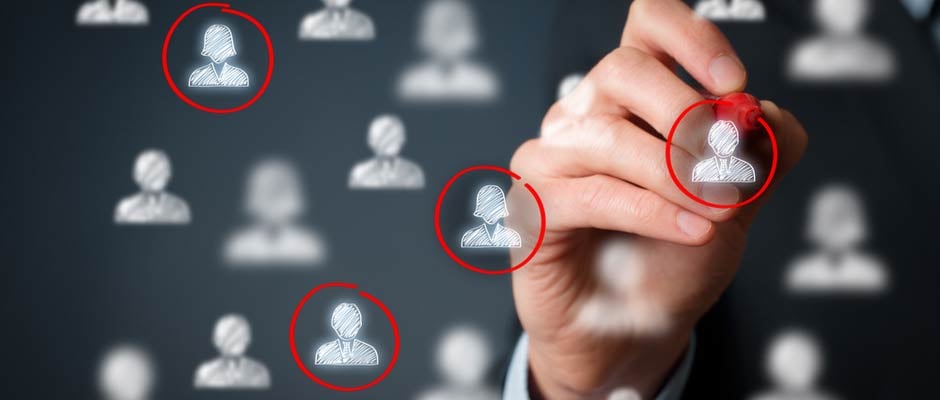The dramatic changes in our 21st-century environment have touched every part of our lives, including our companies and our clients. Because not everything changes all at once, though, we sometimes miss the inflection points that might cause us to modify how we do things, a critical step when your client's evolution means they need a different level of help.
This post presents a Darwinian account of the evolution of sales, highlighting some of the most significant changes in our sales approaches, comparing the Legacy Approach, the Legacy Solutions Approach, and finally the Modern Sales Approach. Sales is a contest where “survival of the fittest” means exhibiting the agility and the mindset to adapt to the changes in your environment.
The General Approach
The Legacy Approach is transactional, starting with a distrust of the prospective client. The approach was designed to sell products and services, but it rarely met clients’ more important business needs.
The Legacy Solutions Approach evolved to correct this transactional emphasis, taking a more professional approach by helping clients solve their problems. Despite this focus, Legacy Solutions was still designed to make selling easier for the seller by adapting to the client's needs.
In response to radical changes in 21st-century business, the Modern Sales Approach is more consultative than either of the past two approaches, as clients struggle to make change and need a greater level of help from salespeople.
The Value the Salesperson Creates
The Legacy Approach sees the product or service as the value the client can expect. There was little thought about the value the salesperson or the sales experience provided the buyer, as the salesperson was only concerned about completing the transaction.
In the Legacy Solution period of sales, the "solution" was the value the salesperson delivered to their clients. Instead of pitching their products, the salesperson identified the client’s problem and sold their solution to address it.

The Modern Sales Approach is an evolutionary adaptation to what clients need, providing value that isn't enabled simply by identifying a solution. Instead, the salesperson creates value through the conversation by sharing their insights, their counsel, their advice, and their recommendations.
The Focus of the Sales Conversation
In the oldest of the Legacy Approaches, the focus of the sales conversation was "why us?" The salesperson would talk up their company and their products before pitching them. Whatever your opinion of this approach, it worked well in its time—until it didn’t.
The Legacy Solution Approach also focused on "why us," but added, "why our solution." It couldn’t really be otherwise, since these salespeople believe that the value they create is through their solution.

The Modern Sales Approach focuses on helping the client achieve a paradigm shift that allows them to replace their outdated assumptions and recognize their new potential. Specifically, it enables clients to change something more than their provider and their solution.
What Is Seen as Value?
The Legacy Approach treats value as providing the prospective client with information about the salesperson’s company, products, and services (imagine how valuable this must have been when there was no internet).
The Legacy Solution treats value as solving the client’s problem by providing them with a predefined solution. As business became more complex, buyers needed more help solving their problems.

The Modern Approach recognizes that many problems are more complex and more complicated than even 10 years ago, a result of the "durable disorder" that marks our time. The Modern Approach addresses clients’ strategic needs, providing more help deciding about and executing change. Here, advice and recommendations are value.
What Is Discovery?
Legacy Approaches looked for their prospective client’s need or created one for them. Why would anyone need an automobile when you already have a horse?
Legacy Solutions has the salesperson “discover” a problem they can solve with their solutions.

The adaptation of the Modern Approach is that the salesperson helps their client discover the nature of their challenge, how to pursue change, and how to improve their results. This typically includes the product or service they sell, but it’s also about making recommendations that cause the client to make the necessary internal changes.
Who Leads the Conversation?
The Legacy Approach, being transactional, resulted in the salesperson following the client's lead. As professional buyers took over the purchase of commodities, the salesperson took direction from their client's company.
The Legacy Solution Approach was built on a sales process where the salesperson negotiated what we now know as the linear sales process, one that mostly worked well for decades, only losing its power as the world became more complex. It included some give-and-take between salesperson and client.

In the Modern Sales Approach, the salesperson leads their client, facilitating a needs-based buyer's journey and helping the client with the conversations that allow them to move forward with the certainty of positive outcomes.
The Salesperson's Challenges
In the Legacy Approach, the B2B salesperson attempts to "overcome objections" to their pitch.
The Legacy Solution encouraged salespeople to overcome objections and provide proof, especially proof that their solution would solve the client’s problems and that previous clients had benefited from buying that solution.
The Modern Approach recognizes that buyers have real concerns to resolve before they can change, even if not every concern is voiced as an objection. Resolving those concerns gives them the certainty necessary to change.

The Salesperson's Targets
In the old days of the Legacy Approach, the salesperson sought the decision-maker, the single person with the authority to make a purchase decision. Over time, leaders transferred buying authority to the people who would have to use the product or service.
The Legacy Solution era sold to a buying committee or a task force, or to some other group charged with buying. This was the halfway step to consensus, as it was generally limited to a relatively small group.
One challenge of the Modern Approach is that contacts and salespeople alike must figure out how to acquire "organizational consensus," with people in different functions in the organization being allowed to discuss and weigh in on major decisions.
While all three approaches are still being practiced, it's always worth looking at the challenges of selling and exploring strategies that might allow you to win more clients and grow your revenue.











